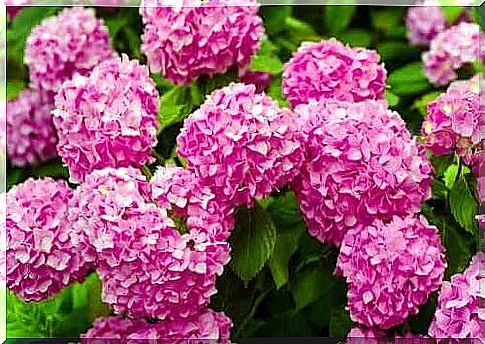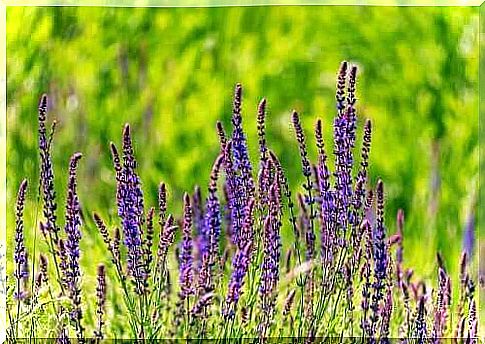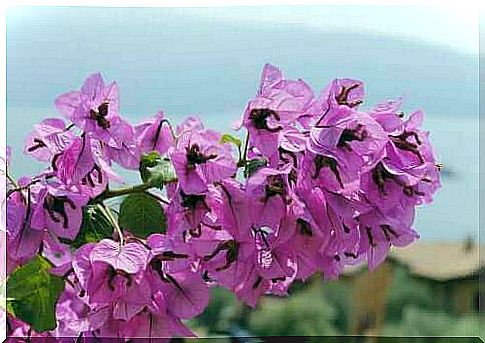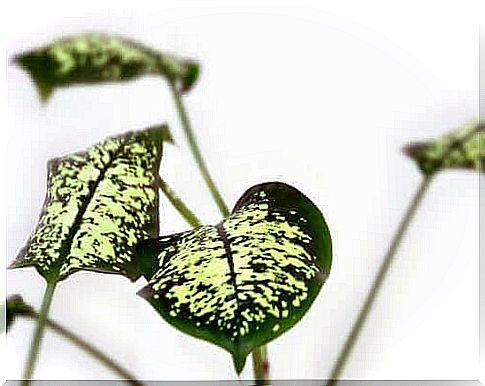Dangerous Plants: Seven You Should Not Have At Home

Sometimes danger can hide behind beauty. This is the case with these seven dangerous plants that you should not have at home. Learn all about them here!
Plants give your home a special touch. They create a natural environment, purify the air and help revive any space. However, some dangerous plants can be poisonous, especially for children and pets.
Usually, the labels that come with the plants recommend how to grow them. However, they do not always warn about the damage they can cause. The people who buy them do not even suspect that they are dangerous.
It is also possible that while walking through the countryside, you see a beautiful plant that you may want to take home, without even knowing if it is dangerous or not. Sometimes, however, beauty is a trap that can cause many problems.
Seven dangerous plants you should not have at home
Hydrangeas are beautiful, but are one of the most dangerous plants you should not have in your home

Hydrangeas are very popular ornamental plants at home. Although their vibrant blue flowers are very conspicuous, they are the most dangerous part.
Chewing on a hydrangea flower can cause respiratory arrest, low blood pressure and a high risk of suffering from dizziness and fainting. The leaves and stems also cause these effects, but to a lesser extent.
These symptoms are caused by hydrazine, a compound of the cyanide family found in this plant.
2. Lilies are popular flowers but are poisonous to cats
Lilies are really popular flowers that you can see in many flower decorations and decorative flower pots. However , cat owners should avoid them.
There are many different types of lilies, all of which have negative effects on cats. Some irritate the cat’s digestive tract and cause diarrhea and vomiting. Other types of lilies affect their kidneys, and can even cause death.
Although studies have not yet discovered which substance in lilies causes poisoning in cats, it has been found that just two petals can be fatal.
3. One of the dangerous plants you should not have at home is Salvia divinorum

The biggest risk for sage is that it is a potential hallucinogen.
Salvia divinorum may surprise many people because it is often confused with common sage, which is edible and has many health benefits.
Salvia divinorum has a hallucinogenic compound similar to LSD. Although Indigenous people in the Amazon use it for ritual purposes, its use can cause irreversible harm. This is because it creates altered states of consciousness and causes hallucinations that meanwhile become recurrent and permanent.
Therefore, when you see that the label says “salvia”, make sure that it is not followed by “Divinorum”.
Brugmansia Arborea or Engels Trumpet: One of the most dangerous plants
This plant is a thick and flowering ornamental plant. Its very attractive flowers hang down like a skirt. It is even more tempting because it has a sweet and pleasant taste.
However, the Angel’s Trumpet is also a psychoactive plant. Its flowers cause psychotic episodes, deterioration and paralysis and can be fatal.
This is because it has tropane alkaloids, which are substances that inhibit the nervous system. They are also present in synthetic substances.
5. Trinitaria is a poisonous plant

This climbing plant is dangerous because of its cardiotonic effects. It is very common in exterior homes as it climbs up the walls. It also has colorful flowers.
Its flowers, stems and seeds contain cyanogens and oleandrine, which are toxic substances that affect the heart. If you swallow this plant intentionally or accidentally, you will start to suffer from arrhythmia and tachycardia, as well as dizziness, vomiting and diarrhea a few hours later.
6. Oleander is dangerous for both humans and animals
Also known as “Nerium”, oleander has small, delicate flowers that make it a favorite among indoor and outdoor plants. However, it is a dangerous plant for both humans and animals.
Oleander contains glycosides that increase heart rate and cause sweating, nausea, vomiting, diarrhea and breathing problems.
It is also dangerous if it comes in contact with the skin because its stem has a milky substance that can be irritating. Therefore, wear gloves when planting, moving or pruning this plant.
7. Mother-in-law’s tongue

This is one of the most classic indoor and outdoor plants because of how easy it is to maintain. However, it can cause skin irritation.
This plant, commonly known as mother-in-law’s tongue, is very popular for how easy it is to maintain both indoors and outdoors. However, this plant contains asparagine, which is an irritating substance that can cause skin problems in some people. If you chew it, it can cause sore throat and heart problems.
General reservations for dangerous plants
These dangerous plants are very decorative and easy to find, so it is always recommended to handle them with care and keep them out of the reach of pets and children.
You must also take other precautions:
- Collect the leaves and petals that fall from the plant.
- Put labels on the plants that are dangerous to warn of their dangers.
- Wash your hands after touching the plants.
- If you have pets, make sure their water bowls are always full so they do not drink the water that collects under these plants.
Finally, remember: When considering buying a new plant, look for information in advance to know if the plants you are considering are dangerous.









